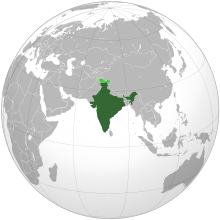F-35 Isn’t Ideal Choice For India – Analysis
By Manohar Parrikar Institute for Defence Studies and Analyses (MP-IDSA)
By Laxman K Behera
The recent Pentagon report on US-India Security Cooperation which indicates the possible sale of the F-35 Joint Strike Fighter to India has created a hubbub in the media. Some have even gone to the extent of suggesting that New Delhi should scrap its ongoing, half-a-decade, effort to procure 126 Medium Multi-Role Combat Aircraft from European countries and instead buy the F-35, the only fifth generation fighter that is available for international customers. However, a careful analysis would show that the F-35 is not an ideal choice for India for a variety of reasons ranging from the delay in its developmental schedule, a tight production line, prohibitive cost, India’s own efforts to jointly develop and produce a fifth generation fighter with its traditional supplier, Russia, and little technological or industrial benefits that would accrue to India from the F-35 purchase.

The first and foremost reason why F-35 is not the ideal choice for India is that the fighter is yet to come out from its developmental phase to the production floor and for exports. The radar evading plane, the biggest ever collaborative project involving the US and eight international partners (UK, Canada, Denmark, the Netherlands, Norway, Italy Turkey and Australia), is still facing many design and technological complexities, which have pushed back the original induction schedule by three years from 2013 to 2016. Even if New Delhi believes in the revised induction schedule and places orders now, deliveries to India are unlikely to commence immediately thereafter. With over 3,000 assured orders for the F-35, including 2,443 units from the US alone, Lockheed Martin, the prime contractor for the plane, would be constrained in meeting its export obligations before executing the existing orders.
The second reason why F-35 is of little relevance to India is because New Delhi’s own efforts to jointly build and develop the Fifth Generation Fighter Aircraft (FGFA) with Russia. Consequent to the government-to-government agreement in 2007, India’s state-owned Hindustan Aeronautics Ltd (HAL) and Rosoboronexport of Russia signed an agreement in 2010 for the preliminary design (PD) of the FGFA at a cost of $295 million. As per the agreement, HAL and Sukhoi Design Bureau (Russia) will undertake the PD for 18 months, followed by Full Scale Design and Development to be undertaken in a separate contract. India has already made it clear that it wishes to procure around 250 FGFAs, with the likely induction starting from 2018 onwards. Given this, it will be quite difficult, if not impossible, for India to go with the US which would be the only county in the world to operate two classes of 5th generation fighters (F-22 and F-35) in the coming years.
The third reason why F-35 is not an ideal choice for India is because of the fighter’s prohibitive cost. As reported by the Pentagon’s Select Acquisition Report, issued in December 2010, the unit procurement cost of F-35 (at 2010 prices) stands at $132.8 million. For the non cost-sharing international customers, the unit cost would be much higher because they are expected to pay a part of the F-35’s developmental cost, which has ballooned to total nearly $55 billion at the end of 2010. The higher price for non-partnering nations is evident from the unit cost of $144.7 million that Israel has agreed to pay for 19 of these fighter aircraft. At this price tag, affordability becomes the key issue for India, whose whole annual defence capital acquisition budget barely matches with the US’s one year F-35 acquisition cost. Although it can be argued that a few F-35s can perform the role of many existing or planned planes in the IAF’s inventory, this argument does not hold ground as the ongoing debate in India between numbers and capability still favours the former.
Last, but not the least, from the defence industrial and technological point of view, there is little that India can benefit from the procurement of F-35, which, if at all happens, will most likely be an off-the-shelf purchase, rather than involve technology transfer to India for license production. Technological secrecy has been a major cornerstone of the US defence programme in general and F-35 in particular. It is noteworthy that despite the F-35 being a multi-country developmental project, core technologies have been denied by the US to its partnering nations. This has often been a stumbling block between the US and its cost-sharing partners, forcing some to threaten to quit the project or reduce their procurement numbers of F-35s from what was originally intended. Even the UK, the closest ally of the US and the only level-1 partner for the F-35 programme, has been denied some core technologies to independently maintain and upgrade the fighter. Compared to this likely technology denial, India’s initial contribution to the FGFA is believed to be around 25 per cent, which can progressively increase if HAL shows maturity in its indigenisation process. Given the technological and industrial benefits of the FGFA and the absence thereof with respect to the F-35, it makes little sense for India to choose the F-35.
Originally published by Institute for Defence Studies and Analyses (www.idsa.in) at http://www.idsa.in/idsacomment/F-35isnotanIdealChoiceforIndia_LaxmanBehera_231111

Probably this is the best ever analysis and answer to the curiousness arises in the people in India.
I express my full support and thanks to Mr. Behera for his open and clear view on this topic.